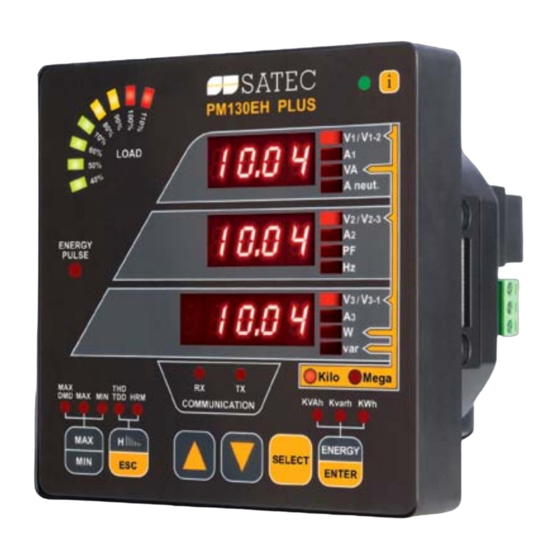
Satec PM130 PLUS Series Installation And Operation Manual
Powermeter
Hide thumbs
Also See for PM130 PLUS Series:
- Quick start manual (4 pages) ,
- Installation and operation manual (161 pages) ,
- Quick start manual (10 pages)

















Need help?
Do you have a question about the PM130 PLUS Series and is the answer not in the manual?
Questions and answers